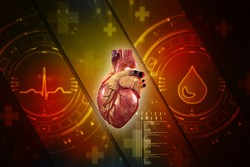New ways to image the beating heart
Despite significant advances in health care in recent decades, cardiovascular disease continues to cause several deaths in developed countries with associated high social costs. A technology is required that can deepen scientists’ understanding of the biological processes related to cardiac physiology at the cellular level and elucidate its function. Intravital microscopy (IVM) is enjoying growing acceptance as it can be used to observe biological systems in living organisms at high resolution, and for monitoring adult organisms with respect to the fate of cells, tissues and organs. The EU-funded project BEATING HEART was established to develop an in-vivo real-time IVM imaging system for moving organs, specifically the beating heart at the sub-cellular resolution level. The main goals involved the development of the imaging system, and the development and the application of computational methods for extracting data and modelling responses. The initiative also developed real-time cardio-respiratory gating to allow multidimensional imaging of tissue microstructure and function. This allowed them to study contractile myocardial cells. Researchers employed a combination of novel stabilisers and sophisticated machine learning algorithms using raw images as input data to reduce movement. This allowed them to study the biology and physiology of a beating heart within a living animal for the first time. Stabilisers were implemented and tested to ensure best performance and minimise perturbations to the functioning of the heart. Scientists used phantoms made of fluorescent beads embedded in agar to simulate biological tissue, while a vibrating source was applied to simulate the organ movement. To evaluate the effectiveness of the system for clinical applications, it was also tested in living animals. BEATING HEART will help shed new light on in-vivo cell physiology pathways and help gain new insights for novel drug discoveries. The computational methods developed will also speed-up analysis and increase the accuracy of findings by automating time-consuming image processing. The knowledge gained will have positive benefits with regard to cardiovascular disease prevention, diagnosis and treatment.







